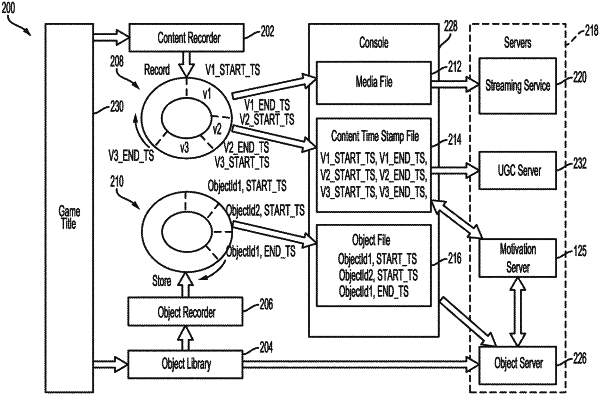| CPC A63F 13/65 (2014.09) [A63F 13/212 (2014.09); H04L 65/1069 (2013.01); H04L 65/1083 (2013.01)] | 20 Claims |

|
1. A method for providing a memory-based motivational mode in virtual reality, the method comprising:
storing a plurality of virtual reality datasets associated with a player, each virtual reality dataset including historical data regarding a different set of stimuli and corresponding biometric data of the player;
training a learning model based on the virtual reality datasets, wherein the learning model is trained to correlate one or more stimuli to biometric data;
launching a virtual reality session for the player, wherein launching the virtual reality session includes providing a current set of stimuli to the player in a virtual reality environment of an interactive content title;
tracking real-time biometric data relative to a customized threshold set by the player during the virtual reality session, wherein the tracked real-time biometric data is associated with the current set of stimuli presented to the player;
identifying that a change to the current set of stimuli is warranted by comparing the real-time biometric data to the customization threshold set by the player, wherein the learning model determines which stimuli correlate to the identified change associated with a corresponding change to the biometric data; and
updating the current set of stimuli of the virtual reality environment based on the stimuli determined by the learning model from among at least one of the identified virtual reality datasets that include the biometric data corresponding to the identified change.
|